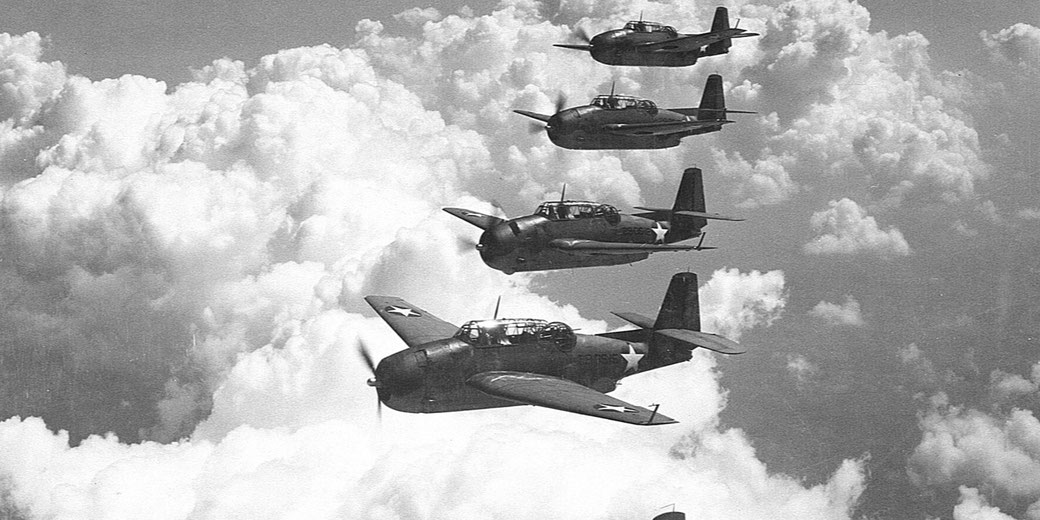The unexplained enigma of Flight 19: How did 5 US military aircraft vanish without a trace?

On the afternoon of 5 December 1945, five Grumman TBM Avenger torpedo bombers took off from Naval Air Station Fort Lauderdale in Florida for a routine training mission.
The flight, designated as Flight 19, involved 14 men, including experienced instructors and young trainees. By early evening, all contact with the planes had suddenly stopped.
Despite one of the largest peacetime search-and-rescue efforts in US naval history, neither the aircraft nor the crew was ever located.
The disappearance of Flight 19 quickly became one of the most puzzling incidents of the post-war era and it contributed heavily to the popular fascination with the so-called “Bermuda Triangle.”
What do we know about Flight 19?
Designated as a navigation and bombing training flight, Flight 19 included five TBM Avenger aircraft.
These were sturdy, single-engine planes that had served extensively in the Pacific during World War II.
They featured long-range fuel tanks, could carry 2,000 pounds of ordnance, and had proven their reliability in combat.
The flight that day was led by Lieutenant Charles C. Taylor, a 28-year-old veteran with over 2,500 flight hours.
Most of the other crewmen had fewer than 300 hours and were still in the early stages of their flight training.
The group flew under the identification of "Naval Air Flight 19" and followed the standard protocols that applied to routine drills.
Where were the planes meant to fly?
The flight plan had a straightforward structure. After takeoff at approximately 2:10 pm, the aircraft were to proceed east toward a bombing practice site called Hens and Chickens Shoals.
Once their practice attacks were complete, they would head further east to reach a designated waypoint.
Then they were to turn north for a stretch of about 73 nautical miles before finally heading southwest back to Fort Lauderdale.
The entire triangular route spanned roughly 317 nautical miles and was intended to take less than three hours.
All participating aircraft were expected to maintain radio contact and fly in a coordinated pattern.
The path lay over known waters and sandbars of the Atlantic, with no unusual weather conditions forecast for the afternoon.
What happened on the day of their disappearance?
Shortly after completing the bombing exercise, reports from radio transmissions indicated that something had gone wrong.
Lieutenant Taylor began to express uncertainty about their location. His radio messages to control became increasingly disoriented.
At one point, he claimed that his compasses had failed and that the flight might be over the Florida Keys.
His confusion puzzled ground operators, who received contradictory positions from various transmissions.
Some pilots in his formation reportedly urged him to fly west, but Taylor seemed convinced they were heading away from the mainland.
Throughout the late afternoon, radio communications became fragmented and inconsistent.
Weather conditions also worsened, with overcast skies and limited visibility contributing to the growing sense of confusion.
The last intelligible transmission from the squadron came shortly after 6:00 pm.
Taylor’s voice was reported to sound panicked, but determined to stay together as a unit.
After that, silence followed. By the time darkness fell, the Navy had lost all contact with Flight 19. None of the five aircraft returned.
What did the search and rescue team find?
The Navy launched an immediate and large-scale search operation. Over 300 boats and aircraft participated in the mission across thousands of square kilometres of ocean.
Within hours of the alert, a Martin PBM Mariner seaplane with 13 crewmen joined the operation from Banana River Naval Air Station.
Less than 30 minutes after takeoff, it too vanished from radar. A passing tanker, the SS Gaines Mills, reported a fireball in the sky near the Mariner’s flight path.
The Navy later concluded that the plane had exploded in midair, possibly due to fuel vapour ignition.
No wreckage from either Flight 19 or the Mariner was ever recovered. Currents and shifting sandbars in the region likely contributed to the failure to locate debris or oil slicks.
Over the following weeks, searches continued with divers, sonar, and patrol aircraft, but nothing appeared to explain what had occurred.
The leading theories and speculations about Flight 19
Various explanations have been proposed since 1945. They range from human error to extreme claims of supernatural interference.
The most widely accepted view held that confusion over navigation in poor weather led the planes off course until they exhausted their fuel.
Lieutenant Taylor’s belief that his compasses had malfunctioned may have caused him to lead the flight east into open ocean rather than west toward land.
With fuel running low and visibility impaired, the planes likely ditched in rough seas, leaving little chance for survival or recovery.
Other theories include electromagnetic anomalies, sabotage, and mechanical failure, though no physical evidence has ever supported them.
Popular culture later absorbed the incident into the legend of the Bermuda Triangle.
It suggested the involvement of supernatural forces or alien abduction. However, the US Navy’s official investigation blamed navigational confusion and pilot error, though the final report recorded Taylor’s status as “cause unknown” to avoid assigning full responsibility in the absence of conclusive proof.
What do you need help with?
Download ready-to-use digital learning resources
Copyright © History Skills 2014-2025.
Contact via email
With the exception of links to external sites, some historical sources and extracts from specific publications, all content on this website is copyrighted by History Skills. This content may not be copied, republished or redistributed without written permission from the website creator. Please use the Contact page to obtain relevant permission.





